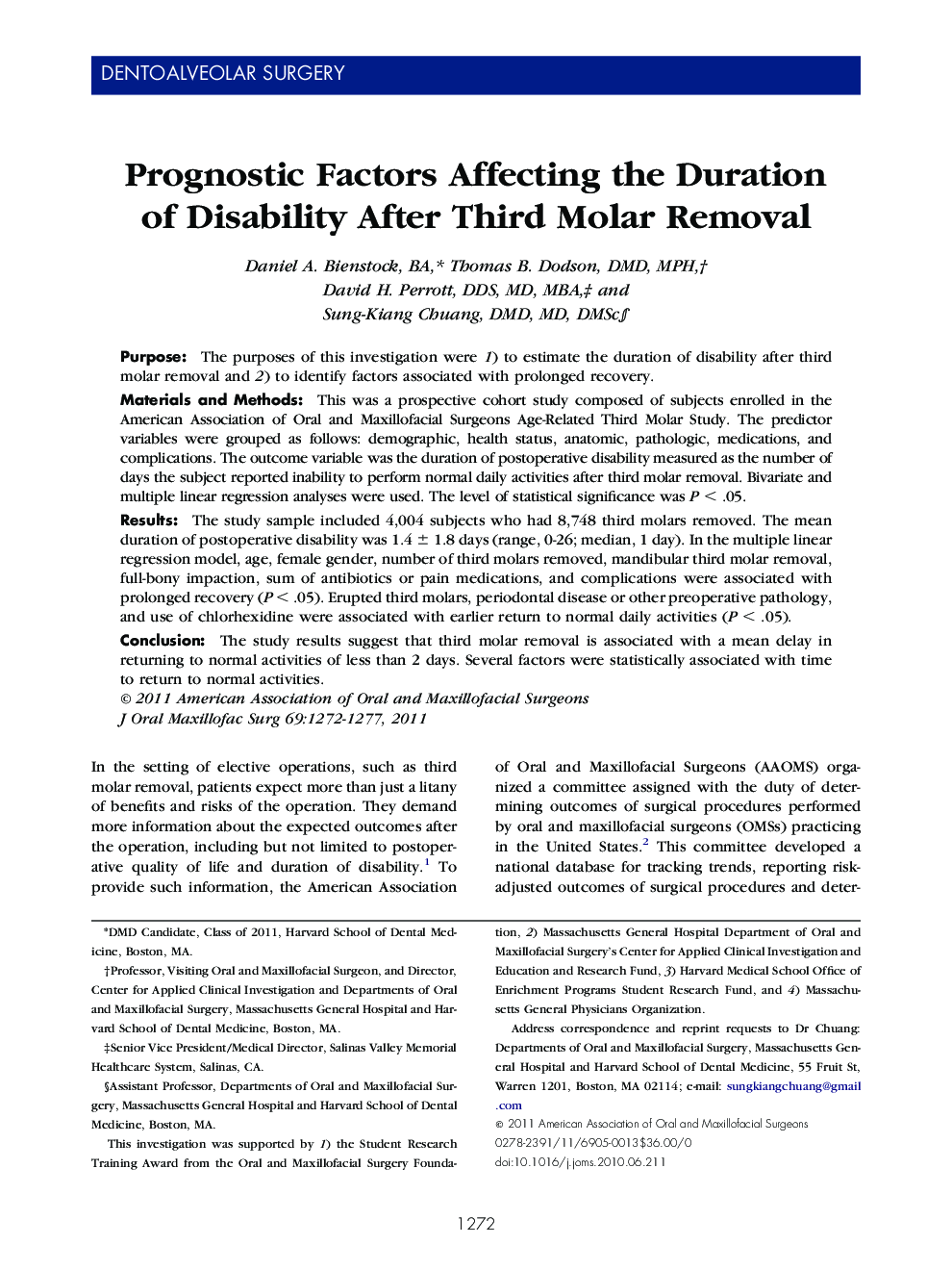| Article ID | Journal | Published Year | Pages | File Type |
|---|---|---|---|---|
| 3154633 | Journal of Oral and Maxillofacial Surgery | 2011 | 6 Pages |
PurposeThe purposes of this investigation were 1) to estimate the duration of disability after third molar removal and 2) to identify factors associated with prolonged recovery.Materials and MethodsThis was a prospective cohort study composed of subjects enrolled in the American Association of Oral and Maxillofacial Surgeons Age-Related Third Molar Study. The predictor variables were grouped as follows: demographic, health status, anatomic, pathologic, medications, and complications. The outcome variable was the duration of postoperative disability measured as the number of days the subject reported inability to perform normal daily activities after third molar removal. Bivariate and multiple linear regression analyses were used. The level of statistical significance was P < .05.ResultsThe study sample included 4,004 subjects who had 8,748 third molars removed. The mean duration of postoperative disability was 1.4 ± 1.8 days (range, 0-26; median, 1 day). In the multiple linear regression model, age, female gender, number of third molars removed, mandibular third molar removal, full-bony impaction, sum of antibiotics or pain medications, and complications were associated with prolonged recovery (P < .05). Erupted third molars, periodontal disease or other preoperative pathology, and use of chlorhexidine were associated with earlier return to normal daily activities (P < .05).ConclusionThe study results suggest that third molar removal is associated with a mean delay in returning to normal activities of less than 2 days. Several factors were statistically associated with time to return to normal activities.
